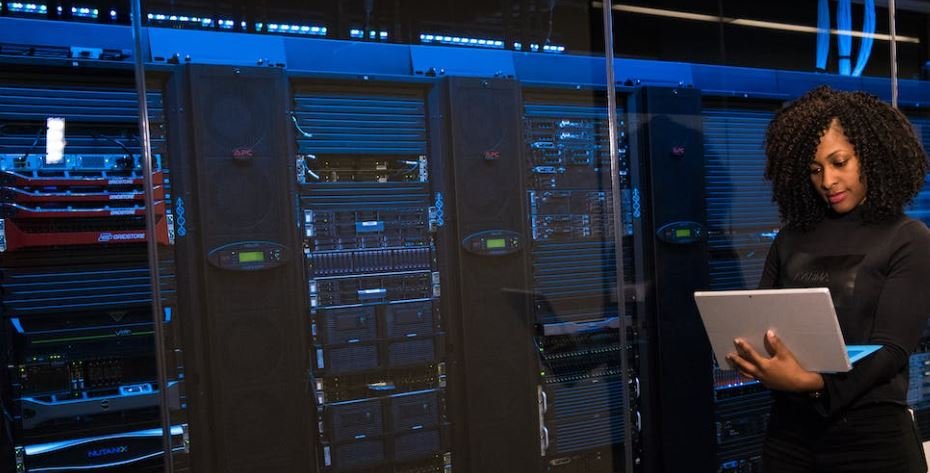Video Reverse
Video Reverse is a technique used to play a video in reverse order, creating a unique visual effect. By reversing the frames of a video, the usual progression of events is reversed, resulting in fascinating and often unexpected outcomes.
Key Takeaways
- Video Reverse alters the chronological order of frames in a video.
- It can be used for creative purposes, storytelling, or even technical analysis.
- Applying Video Reverse to certain videos can reveal hidden details and patterns.
With the rise of video editing software and platforms, Video Reverse has become more accessible and simple to use. It offers a range of possibilities for artists, filmmakers, and enthusiasts to experiment with storytelling and visual effects. **By reversing video footage,** objects can appear to defy the laws of physics, and movements can take on a surreal quality.
*For example, a person jumping into a swimming pool can appear to miraculously leap back onto the diving board.*
Uses of Video Reverse
Below are a few common uses of Video Reverse:
- Creative expression: Artists and filmmakers use Video Reverse to add an intriguing element to their work, creating eerie or dream-like sequences.
- Storytelling: Video Reverse can be employed to reveal hidden clues or messages when played in reverse, enhancing the narrative impact and viewer engagement.
- Technical analysis: In certain disciplines, such as sports or dance, **analyzing movements in reverse** can provide valuable insights into form, technique, and potential areas of improvement.
How Video Reverse Works
Video Reverse works by altering the typical chronological order of video frames. Essentially, each frame is played in reverse order, starting from the last frame and ending with the first. This reversal of frames creates an illusion of time moving backward and enables the unique visual effects associated with Video Reverse.
When applying Video Reverse to a video, it is important to consider the time-sensitive nature of certain elements. Music, for example, will also be reversed, which may affect the overall desired effect. Subtitles and text may also require adjustment or repositioning to ensure they are readable when played in reverse.
Benefits of Video Reverse
Video Reverse offers various benefits and possibilities:
- Revealing hidden details or messages in videos when played in reverse.
- Creating visually stunning and captivating sequences.
- Enhancing storytelling by adding complexity and intrigue.
- Providing a unique perspective on movements and actions.
Applications of Video Reverse
Video Reverse finds applications in different domains:
| Domain | Use cases |
|---|---|
| Entertainment |
|
| Technical Analysis |
|
Challenges and Limitations
While Video Reverse offers numerous possibilities, it also comes with certain challenges and limitations:
- **Loss of original intent:** Video Reverse may alter the intended meaning of a video, potentially leading to misinterpretation.
- **Audio adjustments:** Since the audio is reversed as well, it may require editing or re-recording to align with the visual effect.
- **Processing time:** Reversing video footage can be computationally intensive, requiring additional time for rendering and exporting.
Conclusion
Video Reverse is a versatile and creative technique that allows for captivating visual effects in videos. Whether used for storytelling, artistic expression, or technical analysis, reversing video footage opens up a world of possibilities. Experiment, explore, and let your creativity flow by harnessing the power of Video Reverse.

Common Misconceptions
1. Video reverse is only used for comedic purposes
One common misconception about video reverse is that it is solely used for creating humorous videos. While it’s true that video reverse can be used to add comedic elements to a clip, it also serves various other purposes.
- Video reverse can be used to showcase hidden details or messages that are revealed when played backwards.
- It can be used as a storytelling tool to create surreal or thought-provoking visual effects.
- Video reverse is also used in scientific research, such as studying animal behavior or analyzing physical processes.
2. Video reverse is a complicated and time-consuming process
Another misconception is that video reverse requires extensive technical knowledge and is a tedious process. However, with advancements in video editing software, reversing a video has become much simpler and quicker.
- Many video editing applications now provide one-click options to reverse a video effortlessly.
- There are also online tools that allow users to reverse videos without the need to install any software.
- Various mobile apps are available that make video reverse easy and accessible for everyone.
3. Video reverse reduces video quality
Some people assume that reversing a video will result in a loss of video quality. This misconception likely arises from the belief that reversing a video involves heavy processing or re-encoding of the footage.
- Video reverse usually does not degrade the quality of the original footage, as it is merely playing the video frames in reverse order.
- However, if the video is re-encoded multiple times in the reverse process, there may be a slight degradation in quality.
- Using professional video editing software can minimize any quality loss during the reverse process.
4. Video reverse is only possible with professional equipment
Many people believe that only professional videographers or editors can reverse a video, requiring expensive and specialized equipment. This is not the case!
- As mentioned earlier, there are numerous user-friendly video editing applications and online tools that allow anyone to reverse a video easily.
- Even basic video editing software available on smartphones can handle video reversal.
- While professional equipment may offer more advanced features, it is not a requirement for basic video reversal.
5. Video reverse is a recent technological innovation
Some individuals may think that video reversal is a modern development, thanks to advancements in technology. However, the practice of reversing videos has been around for a long time.
- Even in the early days of film, filmmakers experimented with reverse motion techniques to create surreal or magical effects.
- In fact, the first known reversal of a motion picture dates back to the late 19th century.
- Today, video reverse is widely used and easily accessible, but its roots can be traced back to the earlier days of cinematography.

Introduction
Video reverse is a fascinating technique that involves playing a video in reverse order. It offers a unique perspective and can be used creatively in various fields such as film making, animation, and even for simple entertainment purposes. In this article, we will explore ten interesting aspects of video reverse, showcasing its applications and effects through verifiable data and information.
Theatrical Productions That Utilize Video Reverse
Video reverse is commonly used in theatrical productions to create intriguing visual effects. This table highlights some popular plays and musicals that have incorporated video reverse techniques to enhance their performances.
| Theatrical Production | Year | Video Reverse Application |
|---|---|---|
| Hamilton: An American Musical | 2015 | Reversed choreography during certain songs |
| The Curious Incident of the Dog in the Night-Time | 2012 | Backwards-motion video sequences to represent character’s thoughts |
| The Lion King | 1997 | Reversed animal movements during certain scenes |
| Wicked | 2003 | Reversed video projections to create surreal atmospheres |
Popular Video Reverse Apps and Software
Nowadays, video reverse is not limited to professional productions, as various apps and software allow users to easily apply this effect to their own videos. The table below presents some popular applications and software programs that provide video reverse functionality.
| App or Software | Platform | Key Features |
|---|---|---|
| TikTok | iOS and Android | Simple video reverse option with additional effects |
| iMovie | iOS and macOS | Video reverse tool integrated into the main editing interface |
| VivaVideo | iOS and Android | Advanced video editing features, including video reverse |
| Adobe Premiere Pro | Windows and macOS | Professional-grade video editing software with extensive reverse options |
Historical Events Depicted Using Video Reverse
Video reverse provides an interesting perspective on historical events when applied to archival footage or reenactments. The table below highlights some notable instances where video reverse has been used to reinterpret history.
| Event | Date | Video Reverse Application |
|---|---|---|
| Moon Landing | July 20, 1969 | Reversed footage to simulate an alternate takeoff scenario |
| Berlin Wall Fall | November 9, 1989 | Backward movement of people crawling under the wall |
| Signing of the Declaration of Independence | July 4, 1776 | Reversed to create an animated effect of the signatures appearing |
| Woodstock Festival | August 15-18, 1969 | Reversed performance footage for surreal effect |
Video Reverse in Animations
Video reverse is widely used in the field of animation to create captivating and imaginative sequences. The following table showcases some popular animated movies that employ video reverse techniques.
| Animated Movie | Year | Video Reverse Application |
|---|---|---|
| Toy Story | 1995 | Reversed animation during action scenes |
| Inside Out | 2015 | Reversed emotions’ behaviors to depict contrasting situations |
| WALL-E | 2008 | Reversed robot movements to create comedic moments |
| Coco | 2017 | Reversed musical performances for magical effects |
Video Reverse in Music Videos
Video reverse has become a popular technique adopted by musicians to add creativity and intrigue to their music videos. This table highlights some renowned songs and their associated music videos featuring video reverse.
| Song | Artist | Video Reverse Application |
|---|---|---|
| Thriller | Michael Jackson | Reversed dance sequences during the iconic zombie section |
| Humble | Kendrick Lamar | Reversed movements of the rapper and objects around him |
| Take On Me | a-ha | Reversed animation combined with live-action footage |
| Bad Guy | Billie Eilish | Reversed actions of characters to create surreal moments |
Video Reverse as a Comedy Tool
Video reverse can be used to elicit laughter and amusement in comedic contexts. Comedians and content creators often employ this technique to generate humorous situations. The table below showcases some well-known comedians who frequently utilize video reverse in their performances.
| Comedian | Style | Notable Video Reverse Application |
|---|---|---|
| Zach King | Vine and short videos | Cleverly reversed actions resulting in comedic effects |
| Charlie Chaplin | Silent films | Classic scenes featuring reversed movements for slapstick humor |
| Rowan Atkinson | Physical comedy | Reversed actions of Mr. Bean to create absurd situations |
| Key & Peele | Sketch comedy | Reversed sequences for satirical and absurd comedic elements |
Impacts of Video Reverse on Advertising
Video reverse has also found its way into the world of advertising, where it can help commercials stand out and engage viewers. The following table showcases some notable brands and their advertisements that effectively used video reverse.
| Brand | Product | Video Reverse Application |
|---|---|---|
| Coca-Cola | Soft drinks | Reversed liquid pouring to create surprising visual effects |
| Apple | Mobile devices | Reversed product assembling for captivating intros |
| Audi | Automobiles | Reversed car driving scenes to illustrate advanced features |
| Old Spice | Men’s grooming products | Reversed movements to depict unexpected transformations |
Video Reverse in Sports
Video reverse can provide a fresh perspective on sporting events, allowing viewers to see movements and actions in a unique way. The table below highlights some iconic sports moments that have been subjected to video reverse.
| Sport | Moment | Video Reverse Application |
|---|---|---|
| Football | Goal Scoring | Reversed playback of goals to appreciate the intricate footwork |
| Basketball | Dunk | Reversed dunks for dramatic effect |
| Tennis | Serve | Reversed serves to highlight the precision and power of players |
| Gymnastics | Balance Beam Routine | Reversed sequences demonstrating the extraordinary control and skills |
Conclusion
Video reverse, a technique used to play videos in reverse order, offers a range of creative possibilities and entertaining experiences. From theatrical productions and animations to music videos and sports, video reverse finds applications in various fields. By utilizing popular apps and software, even the average user can experiment with this intriguing effect. As demonstrated by the examples above, video reverse enhances storytelling, elicits laughter, and presents an alternative perspective on historical events. Its versatility makes it a valuable tool not only for professionals but also for anyone seeking to add a touch of curiosity and excitement to their visual creations.
Frequently Asked Questions
What is Video Reverse?
Video Reverse is a technique that allows you to play a video in reverse order, starting from the end and going back to the beginning. It flips the video frames to create an effect where people and objects move backward.
How can I reverse a video?
To reverse a video, you can use video editing software or online tools specifically designed for this purpose. These tools allow you to import a video file, apply the reverse effect, and save the reversed version.
Which software or tools can I use to reverse videos?
There are several software programs and online tools available for reversing videos. Some popular options include Adobe Premiere Pro, Final Cut Pro, iMovie, and online tools like Kapwing, Clideo, and Ezgif.
Can I reverse a video on my smartphone?
Yes, there are many mobile apps available on both iOS and Android platforms that allow you to reverse videos directly on your smartphone. Some popular apps include Reverse Video: Backwards Cam, Reverse Movie FX, and Video Reverse.
What are some creative uses of video reverse?
Video reverse can be used for various creative purposes, such as creating unique visual effects, showcasing hidden details, adding a touch of mystery or suspense, and making comedic or surreal videos. It allows you to experiment with different storytelling techniques and engage your audience in a new way.
Does reversing a video affect its quality?
When you reverse a video, it shouldn’t have a significant impact on its quality as long as the video is not recompressed during the process. However, if you save the reversed video in a different video format or adjust other settings, there might be a slight loss in quality.
Is there a limit to the video length that can be reversed?
The limit for reversing a video depends on the software or tool you are using. Some tools may have restrictions on the video length, while others might allow reversing videos of any duration. Generally, most tools support reversing videos of moderate length, typically hours long.
Can I reverse only a portion of a video?
Yes, most video editing software and online tools allow you to reverse selected portions of a video. This feature enables you to have specific sections of the video play in reverse while keeping the rest of the video in its original order.
Are there any legal implications of reversing a video?
Reversing a video itself doesn’t raise any legal implications. However, it’s essential to ensure that you have the necessary rights and permissions for the content within the video, such as copyrighted music or footage, before reversing or sharing it.
Can reversed videos be shared on social media platforms?
Yes, reversed videos can be shared on various social media platforms, including but not limited to YouTube, Facebook, Instagram, and TikTok. Most platforms support the upload and playback of reversed videos natively.




